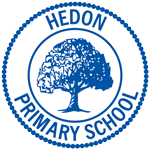D&T
Design Technology prepares children to deal with tomorrow’s rapidly changing world. It encourages children to become independent, creative problem-solvers and thinkers as individuals and as part of a team, making positive changes to their quality of life. It enables them to identify needs and opportunities and to respond to them by developing a range of ideas and by making products and systems.
Through the study of Design and Technology, they combine practical skills with an understanding of aesthetic, social and environmental issues, as well as functions and industrial practices. This allows them to reflect on and evaluate present and past design and technology, its uses and its impacts. Design and Technology helps all children to become astute and informed future consumers and potential innovators.
What we do in the Design Technology Curriculum
These include:
- Products to be made for a purpose.
- Ensure individuality in children’s design and construction of products.
- Two strands: Designing and Making and Cooking and Nutrition.
- More emphasis on creating ‘innovative’ products in KS2.
- Teaching the importance of making on-going changes and improvements during making stages.
- Looking into seasonality of ingredients and how they are grown, caught or reared.
- The introduction of computing and coding of products in KS2.
- Researching key events and individuals in KS2.
Intention
It is the intent of Hedon Primary School for Design Technology to taught in all year groups at least once per term, which includes one topic relating to food. Design Technology projects are often made cross curricular – linking to other subjects taught.
Implementation
The teaching of Design Technology across the school follows the National Curriculum. Children design products with a purpose in mind and an intended user of the products.
Food technology is implemented across the school with children developing an understanding of where food comes from, the importance of a varied and healthy diet and how to prepare this.
Also, through Design Technology there are many approaches and attitudes to learning which have links to British Values.
In Key Stage 1:
Within key stage 1 we also aim to develop design, creativity and problem solving through purposeful design projects which promote the children’s skills in developing as individuals and as part of a team. Key stage 1 also aims to promote in children a clear understanding of where food comes from.
In Key Stage 2:
Within key stage 2 key events and individuals that have influenced the world of Design Technology are teaching focuses that are to be covered.
The use of computer programmes and applications are also a key focus to be utilised by children in their design of their products.
Impact
Assessment of children’s learning in Design Technology is an ongoing monitoring of children’s understanding, knowledge and skills by the class teacher throughout lessons. This assessment is then used to inform support and challenge required by the children.
Summative assessment is conducted by class teachers using Seasaw across each year group of the school to inform the subject leader of progress or skills and knowledge still to be embedded.
Design Technology is also monitored by the subject leader throughout the year in the form of book monitoring, lesson observations and pupil interviews to discuss their learning and understanding and establish the impact of the teaching taking place.
Further information
“You make learning fun so the children are interested.”
“Pupils are motivated and enjoy learning.”
“I value the caring, nurturing nature of the staff.”
“I like the community environment; it feels very inclusive and all the teachers and staff are friendly and approachable.”
“My child feels happy going to school everyday.”
“Staff have been fantastic. Especially in times of isolation and the understanding of situations and help and support they have offered.”
“Those with particular talents, and pupils with special educational needs and/or disabilities (SEND), are nurtured to achieve their very best.”
“Pupils feel safe and well cared for.”
“This is a school where pupils can learn without being disrupted by the behaviour of others.”
“Thank you so much for everything you have done, from teaching our children, to keeping them safe but also all the fun and laughter you have given them; every one of you is amazing!”
“The school is a safe and friendly environment.”
“The school is aware of diversity and additional needs.”
“You have given my daughter courage and her joy back. She is smiling at the start and end of every school day.”
“Thanks to all for keeping my son focused and happy at school.”
“This is a happy, welcoming and inclusive school.”
“Many pupils do special jobs, such as eco-warriors and reading ambassadors.”
“Children in the Reception class get off to a flying start. Children are learning and thriving.”
“Pupils are polite and chatty. They listen carefully and show respect to adults and each other.”
“Keep up the outstanding work you are doing.”
“Pupils appreciate the many sporting activities, competitions and clubs on offer.”
“They get on well with each other and with the adults in school.”

